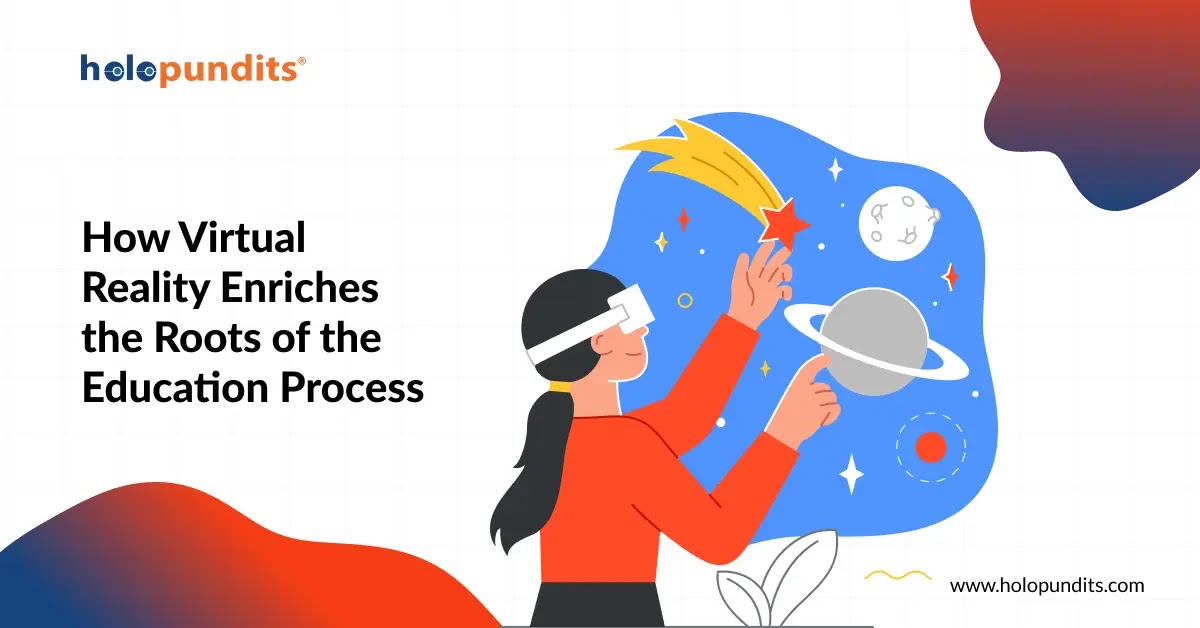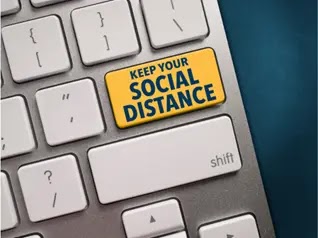How Virtual Reality Enriches the Roots of the Education Process

Education began as a necessary exchange or transference of cultural heritage. What was once done as a means of survival became a means of preservation of culture, and then became something entirely new. Culture, while still the root of many educational processes, has taken a backseat as the main driving force of education. Today, educational goals are a little broader in concepts, though no less necessary for our survival- at least the survival of our current way of life.
Virtual reality is a newer iteration of an old method of transferring information from one person to the next. While it commonly gained its widespread popularity in the gaming and entertainment sphere, virtual reality also has the ability to deeply enrich the roots of the educational process. Much like books and videos created by knowledgeable professionals and past generations offer valuable insights for students, virtual reality in education is another tool used to transfer knowledge from one person to another.
The Goal of Education
The ultimate goal of education is the cultivation of learning practices in students. It's the process of developing skills and abilities that in turn help them become a benefit to society, and not a detriment. Educational outcomes where skills are involved include:
- Teamwork
- Leadership skills
- Communication and social skills
- Ethical problem solving
- Fostering creativity
- Emotional Intelligence
- Collaboration
Learning these basic skills as a child and developing them as an adolescent and young adult helps to nurture the growth of society in positive directions. Virtual reality gives students an immersive environment in which to rapidly internalize these skills.
What is the Educational Process?
Education itself is the systematic process of measuring information retention and performance requirements. The more technical definition of the educational process is a "systematic, sequential, logical, scientifically based, planned course of action consisting of two major interdependent operations, teaching and learning." (Source) The most important factors in the educational process are the child, the teacher, and the subject material. Without any of these, technically there is no education.
What was once done in fields and farms in summer and around the hearth in the middle of winter by parents and grandparents is now done by trained professionals with an eye for detail and a keen understanding of human psychology. Now, we have the opportunity to train specifically for one field and grow proficient at understanding a specific student and how they learn best.
In this regard, virtual reality is very well suited for education. Because of its analytic capabilities, it swiftly measures and analyzes progress in given scenarios. If the technical root of the education process is measuring information retention and performance, then virtual reality comes innately capable with these traits. It can measure various aspects of the learning process, including progress updates that can be analyzed by the teacher to create a beneficial learning environment for both teacher and student. There are more benefits to virtual reality in education that just this, however.
The Benefits of Virtual Reality in Education
Better Focus on Subject Material- Because of the immersive nature of virtual reality, a student can block out all external stimuli and focus entirely on the subject matter at hand. This enables them to gain a more complete grasp of the information they're studying and focus more intently in the time they're given with the technology.
Rapid Information Internalization- Remembering information requires a few things to make permeant in a person's mind. The most important factors are a trigger of several senses. The more senses involved, better the memory retention. Virtual reality can engage sight, sound, and emotion simultaneously in a manufactured setting. If a student can shut out the external stimuli, they can be more present in the simulation and engage the critical senses that trigger memory, creating more internalization of critical concepts and better information retention.
Gamified Nature of Information- Everything is more interesting when its turned into an exciting game. In fact, students- especially younger ones- learn better when the information is exciting and fun, which is why most learning tasks are made fun as a child. Virtual reality gamifies the educational process and students have a more engaging and entertaining time learning about their critical role in society.
Development of 21st Century Skills- 21st Century Skills are a set of skills required for students to have by the end of a formal education. These include anything from communication, to leadership to technology skills, etc. These skills are particularly desired in the modern workplace, and employers actively search for candidates that can mark off all the boxes. Virtual reality's immersive nature helps develop these skills by giving social and multiple-choice simulations that test these skills often.
How Can Students Use Virtual Reality in the Classroom?
There are dozens of use cases for virtual reality in the classroom. A few of them include:
Virtual Field Trips- It can be costly and difficult to do field trips on a regular basis, but with virtual reality, students can take frequent "trips" to places around the world. This helps develop cultural transference that education initially started out as. Students can experience different cultures with virtual simulations and gain a deeper understanding of what drives the human population.
Exploring Conceptual Subjects- Theory-based conceptual subjects can be incredibly difficult to grasp, but with VR, teachers can bring them to life with graphs, diagrams, and models that the student can interact with in a more engaging way. For instance, micro science subjects like cells, atoms, and matter are easier to understand via simulations.
Computing and Technology Skills- We do live in an increasingly technological world. Even subjects like agriculture, farming, animal husbandry, and others that don't necessarily need technology to work have had advancements in technology that benefit the industry. Virtual reality allows students to gain a familiarity with technology that enables them to develop an innate understanding and ability to use other forms of modern technology as they grow older.
Immersive Group Learning- Learning as a group and doing group projects is an integral part of developing good social skills. Virtual reality can give students the opportunity to work together on projects like the more conceptual subjects from before. It allows students to work together in the virtual environment via shared simulated experiences to better understand a subject.
Blending Virtual Reality and Traditional Learning- Virtual reality may someday replace traditional learning methods entirely, but that's not the case just yet. Instead, it's important to use every resource available. Blending traditional methods with virtual reality learning ensures that generational information is continually passed down from person to person.
In the end, the educational process is all about giving one's culturally pertinent information to the next person in line. Education has become a broader form of transference, and there is more choice involved in what we can learn today. It's no longer seed saving, building, and hunting, but the subjects we have are no less important to the survival of the world as we know it. Virtual reality is nothing without the information that developers have put into it, whether they're passing on technological information, or organic information. VR learning is simply another method of giving old information to new generations of developers, art geeks, cooking enthusiasts, and gardeners. Virtual reality may not be the be all, end all of critical information, but right now it's probably the best we have.



Comments
Post a Comment